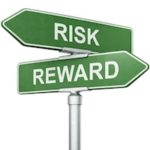How to Reduce Risk and Embrace Healthcare Marketing Success

So the challenge for modern medical practices—individuals and organizations facing the new consumerism and intense competition—is how to achieve business and professional goals with a limited element of risk.
Many providers are uncomfortable with the need to market their services. But healthcare in America is reinventing itself. Physicians are forming groups, hospitals are hiring doctors, and retailers and pharmacy chains are eating market share. For some practices, just surviving is the greater risk.
[bctt tweet="For some healthcare practices, just surviving is the greatest risk."]Limiting Risk in Results-Driven Marketing
As a rule, most physicians and surgeons are risk-adverse. But some element of risk is a business fact of life. Successful businesses seek to understand and limit risk. In fact, effective marketing is a risk reduction strategy that protects the provider’s practice, answers the competition and helps achieve defined business goals.
It turns out that the biggest risk is not taking any risk. But it is sound business to minimize risk in a results-based marketing system. The cornerstone components include a tested and proven methodology and a trackable approach. The following four-part model is presented in depth during our Advanced Healthcare Marketing Seminar series.
Proven Strategies: Much like the practical side of patient care, learning from the experience of others provides valuable insight. The corporate and commercial world is one resource; case studies, data and marketing academia are others.
Marketing Plan: Create a goal-based strategic plan; one that is specific, written and quantifiable. It will address each of the six proven ways to market any healthcare organization. The absence of a plan increases risk.
Marketing planning is similar to the “exam, diagnosis and treatment recommendations” process. It begins with clear objectives and goals, utilizes SWOT analysis, applies other planning tools, and identifies the best strategies and tactics for the current situation and goals. Most importantly, the plan provides for a budget that sufficiently supports achievement of the goals.
Effective Implementation: These are the carefully orchestrated action steps that apply the dedicated resources to the defined strategies and tactics. Experience—knowing what works and what doesn’t work—helps guide implementation, increase efficiency and enhance Return-on-Investment (ROI).
Evaluate Results: Testing strategies and tactics before rollout, and measuring results provides data to measure ROI of results-based marketing. In addition, the performance data guides adjustment to “push the winners” for greatest effectiveness.

Regarding risk in business, Facebook founder Mark Zuckerberg could have been thinking about marketing healthcare delivery in America. “In a world that’s changing really quickly, the only strategy that is guaranteed to fail is not taking risks.”
Related Articles:
5 Ways to Clobber the Competition with Healthcare Marketing









